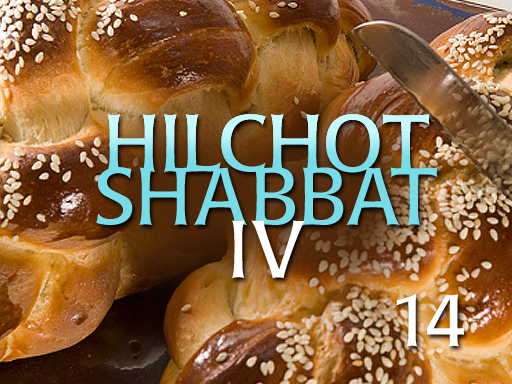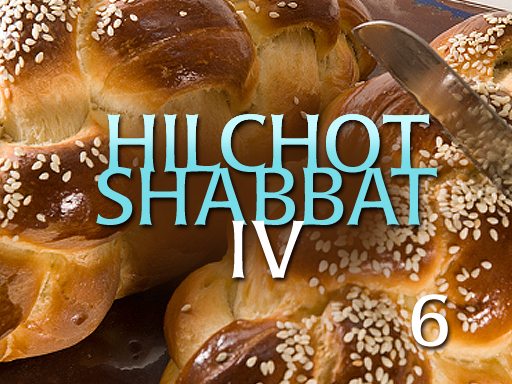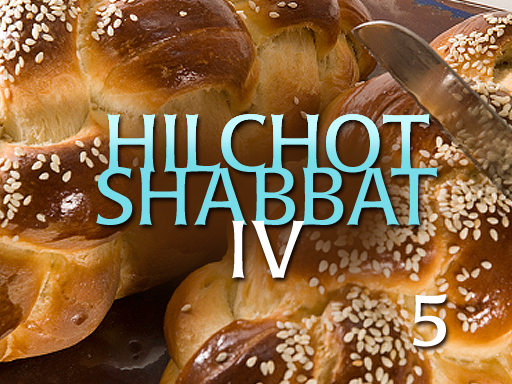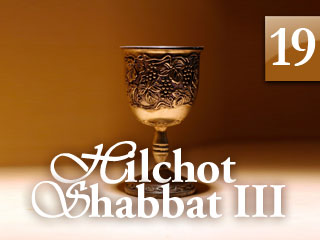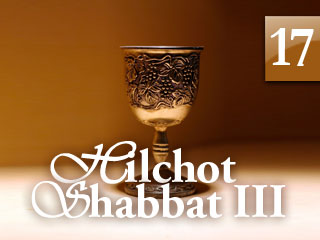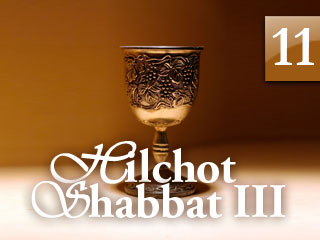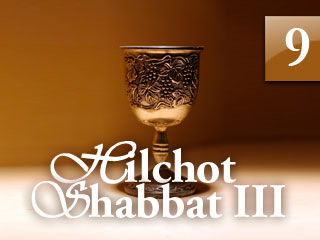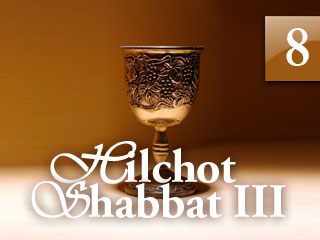Videos
Brushing Teeth on Shabbat
Posted onIn this Torah shiur (class) on Hilchot Shabbat, Rabbi Shimon Isaacson discusses the eight issues relating to brushing teeth on Shabbos.
Overview of Memachek
Posted onIn this Torah shiur (class) on Hilchot Shabat, Rabbi Shimon Isaacson introduces the Av Melacha (primary prohibited activity) of Memachek (smoothing), and its toldah (sub-category) of Memarei’ach (spreading or scraping). The class included a discussion of using ointments on Shabbos.
Hanging Up Wet Clothing on Shabbat
Posted onIn this Torah shiur (class) on Hilchot Shabbat, Rabbi Shimon Issacson discusses the prohibition of hanging up wet clothing to dry on Shabbat, as part of the prohibition of marit ayin (giving the impression that one has transgressed a Torah law), as hanging up wet clothes can give the impression that one has recently laundered them.
Sechita: The Prohibition of Wringing out Clothing
Posted onIn this Torah shiur (class) on Hilchot Shabbat, Rabbi Shimon Isaacson reviews the prohibition of sechita, wringing out a wet garment or fabric, as this act is an integral part of the laundering process.
Laws of Libun, Part 2: Dry Cleaning
Posted onIn this Torah shiur (class) on the laws of Shabbat, Rabbi Shimon Isaacson discusses whether one can clean a garment without using a liquid medium.
Introduction to Libun: Laundering on Shabbat
Posted onIn this Torah shiur (class) on the laws of Shabbat, Rabbi Shimon Isaacson begins explaining the Shabbos prohibition of cleaning and laundering clothes and fabrics.
Mochek: Erasing on Shabbat
Posted onIn this Torah shiur (class) on Hilchot Shabbat, Rabbi Shimon Isaacson analyzes the prohibition of erasing on Shabbat, focusing on the issue of cutting cakes with writing.
Kotev: Writing in Other Languages
Posted onIn this Torah shiur (class) on Hilchot Shabbat, Rabbi Shimon Isaacson continues his discussion of the prohibition of writing on Shabbat, focusing on the halachic definition of writing in languages other than Hebrew.
Practical Applications of Kotev
Posted onIn this Torah shiur (class) on the Melacha of Kotev (writing), Rabbi Shimon Isaacson reviews the practical applications of Hilchot Shabbat, including the halachot of making puzzles on Shabbat, writing on cakes, and using a magnet board.
Melechet Kotev: Temporary Writing
Posted onIn this Torah shiur (class) on the Melacha (Shabbat prohibition) of Kotev, Rabbi SHimon Isaacson explains the need for the writing to be lasting, (kayama) in order for it to be considered a complete Torah transgression. In addition, Rabbi Isaacson examines the issue of writing in other languages.
The Melacha of Kotev: Engraving
Posted onIn this shiur (Torah class) on Hilchot Shabbat, Rabbi Shimon Isaacson begins teaching the melacha (Shabbat prohibition) of Kotev, writing or engraving.
Introduction to Melachot of Kotev and Mochek
Posted onIn this Torah shiur (class) on Hilchot Shabbat, Rabbi Shimon Isaacson introduces the melachot (Shabbat prohibitions) of Kotev, writing, and mochek, erasing.
Melechet Kosher Principles and Applications
Posted onIn this Torah shiur (class) on Hlchot Shabbat, Rabbi Shimon Isaacson looks at the principles and applications of the prohibition of Kosher, tying knots on Shabbat.
Introduction to Melechet Kosher
Posted onIn this Torah shiur (class) on Hilchot Shabbat, Rabbi Shimon Isaacson introduces the Melacha of Kosher, the prohibition of tying a permanent knot on Shabbat.
Expanding on a Shabbat Prohibition
Posted onIn this Torah shiur (class) on Hilchot Shabbat, Rabbi Shimon Isaacson discusses the concept of Marbeh B’Shiurim, the question of whether one may expand on a Shabbat prohibition in a situation where it is permitted.
Benefitting from Chillul Shabbat
Posted onIn this Torah shiur (class) on Hilchot Shabbat, Rabbi Shimon Isaacson explores the various laws of Maaseh Shabbos, which discuss whether one can benefit from an act of chillul Shabbat.
Benefitting from ‘Maaseh Shabbos’
Posted onIn this Torah shiur (class) on Hilchot Shabbat, Rabbi Shimon Isaacson discusses whether of not it is permissible to benefit or use something which was created by someone performing a Shabbat prohibition.
Hatmanah
Posted onIn this Torah shiur (class) on Hilchot Shabbat, Rabbi Shimon Isaacson presents the issue of Hatmanah, insulating a food in order to retain its warmth, on Shabbat.
How to Re-heat Food on Shabbat
Posted onIn this Torah shiur (class) on Hilchot Shabbat, Rabbi Shimon Isaacson instructs us on practical ways to warm up food on Shabbat.
Melachot D’Rabbanan vs. Gzerot D’Rabbanan
Posted onIn this Torah shiur (class) on Hilchot Shabbat, Rabbi Shimon Isaacson analyzes the difference between Melachot D’Rabbanan (Rabbinic Shabbat Prohibitions) and Gzerot D’Rabbanan (Rabbinic Ordinances), and how it impacts Shehiya and Chazara. The class also discusses the use of crockpots on Shabbat.
Introduction to the Laws of Chazara
Posted onIn this shiur (Torah class) on Hilchot Shabbat, Rabbi Shimon Isaacson concludes the laws of shehiya, leaving food on a fire on Shabbat, and introduces the laws of chazara, returning food onto a fire on Shabbat.
Shehiya
Posted onIn this Torah shiur (class) on Hilchot Shabbat, Rabbi Shimon Isaacson discusses the definition of shehiya (leaving food on a flame on Shabbos), and elaborates on the various types of shehiya. Rabbi Isaacson begins a discussion of how to apply these principles to using a blech, hotplate, and oven on Shabbos.
Tea on Shabbat
Posted onIn this Torah shiur (class) on Hilchot Shabbat, Rabbi Shimon Isaacson discusses how to prepare tea properly on Shabbat, and the prohibition on Hagasa (stirring) very hot food.
Cooking in a Kli Sheini
Posted onIn this Torah shiur (class) on Hilchot Shabbat, Rabbi Shimon Isaacson explains why one may not cook in a kli sheni (secondary container), and reviews the Halachot of ‘iruy’ (pouring hot liquids).
Primary and Secondary Vessels
Posted onIn this shiur (Torah class) on Hilchot Shabbat, Rabbi Shimon Isaacson continues his explanation of the differences between kli rishon and kli sheini.
Kli Rishon and Kli Sheini
Posted onIn this shiur (Torah class) on Hilchot Shabbat, Rabbi Shimon Isaacson explains the fundamental differences between kli rishon and kli sheini.
Bishul: Three Levels of Transferred Heat
Posted onIn this Torah shiur (class) on Hilchot Shabbat, Rabbi Shimon Isaacson discusses the kli rishon (first degree of heated container), kli sheni (second degree of heated container), and kli shlishi (third degree of heated container), and explains the Halachot that refer to each, as regards to cooking or heating food on Shabbat.
Ain Bishul Achar Afiya
Posted onIn this Torah shiur on Hilchot Shabbat, Rabbi Shimon Isaacson explains the Halachic ruling of Ain Bishul Achar Afiya/Tzliyah. There is no additional cooking after an item has been baked or roasted, and how it applies to relevant questionable situations.
Ein Bishul Achar Bishul
Posted onIn this Torah shiur (class) on Hilchot Shabbat, Rabbi Shimon Isaacson discusses the details for the Halacha that there cannot be cooking of a previously cooked item, and how the Halacha views baking after cooking.



